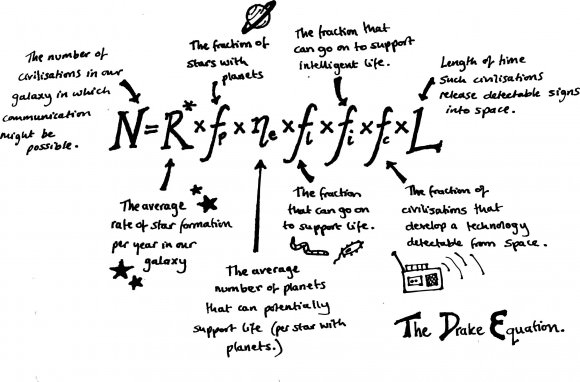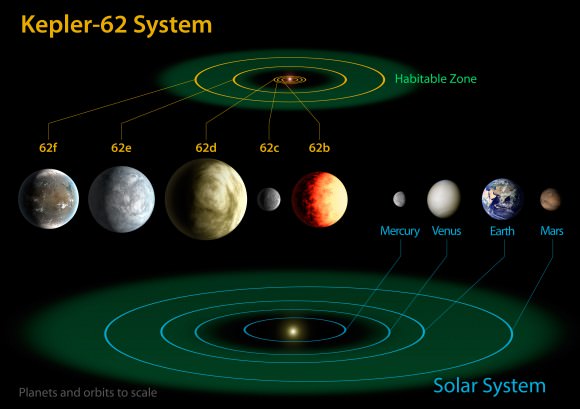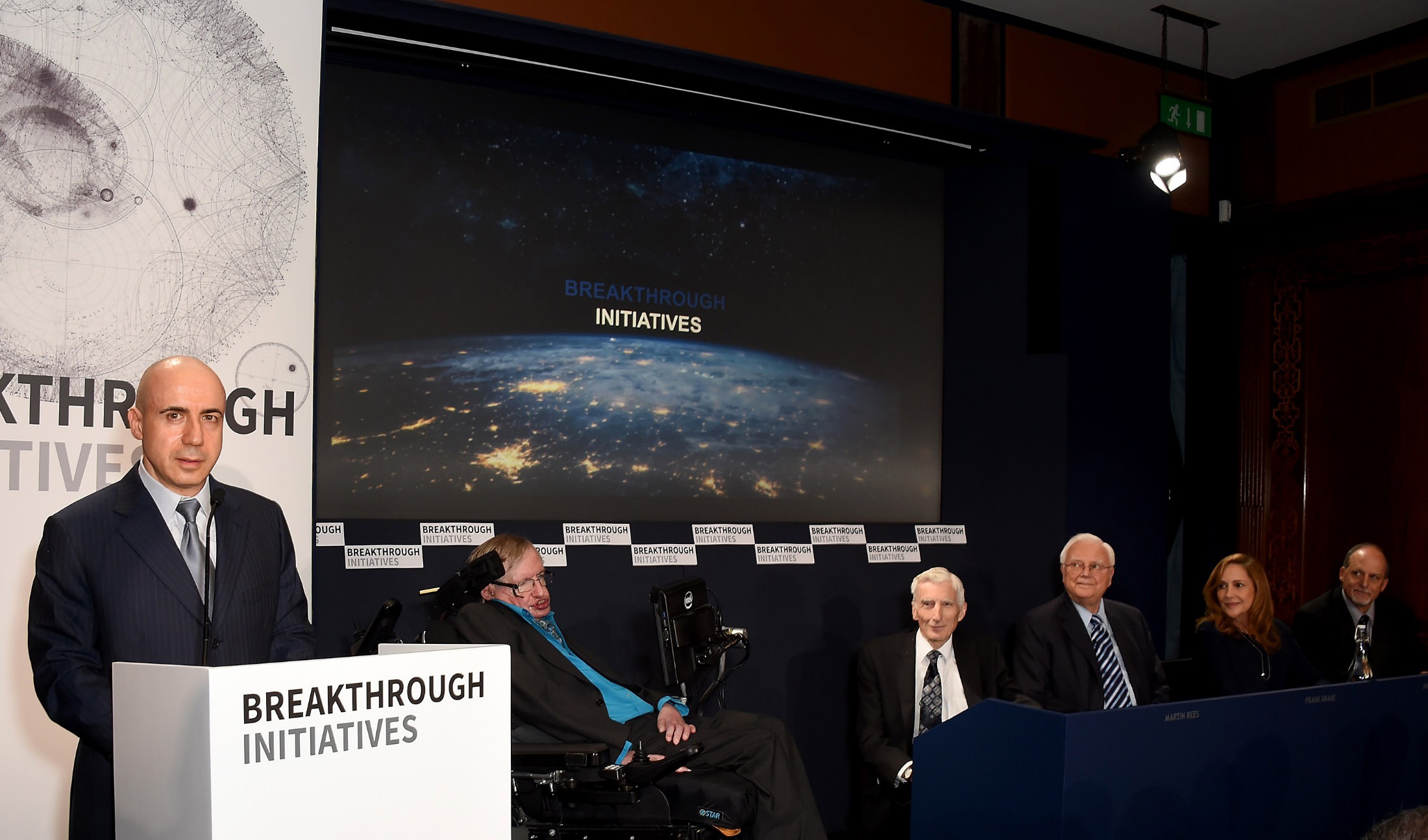Stephen Hawking, Frank Drake and dozens of journalists gathered at the Royal Society in London last week to hear astronomers announce a ground-breaking new project to search for intelligent extraterrestrial life called “Breakthrough Listen.” They will be using two of the world’s largest radio telescopes (Green Bank Telescope in West Virginia and the Parkes Radio Telescope in Australia) to listen for radio messages from intelligent alien species. Scientists have chosen to target the nearest million stars as well as the nearest 100 galaxies. This project will also monitor the Galactic plane for months at a time. This unprecedented effort is a collaboration between UC Berkeley and the Breakthrough Prize Foundation, and employs an international team of astronomers and data scientists, including Frank Drake – the father of SETI (Search for ExtraTerrestrial Intelligence).
It is perhaps fitting that this new program will make use of the Green Bank Telescope (GBT), since Green Bank, West Virginia was the site of the first modern SETI experiment, called “Project Ozma.” In 1960, Frank Drake pointed the Tatel telescope at two nearby stars to search for the telltale signs of intelligent life; radio signals near 1.420 GHz. He listened on-and-off for four months, collecting 150 hours of data. He heard nothing.
In 1963, astronomers began the first ever continuous monitoring program using the Ohio State University Radio Observatory. Called the “Big Ear,” this observatory was used to monitor the sky continuously for 22 years. They heard nothing. The “Big Ear” was dismantled in 1998 to make room for the expansion of a nearby golf course.
In 2009, UC Berkeley launched the latest incarnation of the Search for Extra-Terrestrial Radio Emissions from Nearby Developed Intelligent Populations (SERENDIP), which employs the Arecibo telescope in Puerto Rico. The idea is to effectively “piggy-back” on other planned radio observations and to use the same data that other astronomers are taking to study galaxies, but search those radio channels to find messages from ET.
The new program will be “a factor of 100 times more powerful than any current or past SETI program” says astronomer Geoff Marcy, a leading member of the team that will be organizing this search. He goes on to say that the 1.5 GHz bandwidth used for this program will be “like tuning your radio in your car, but instead of collecting the music from just one station, you collect the transmission from 1.5 billion stations.”
Finding funding for SETI projects has been a challenge ever since NASA pulled their support in 1993. Scientists have relied on large private donations for years. Between 2000 and 2007, SETI pulled in nearly $49 million to build the Allen Telescope Array in northern California. Such donations have been sufficient to support some of the smaller projects, but there hasn’t been a new, big-budget SETI endeavor in years. Many scientists are hopeful that the influx of funding from investor Yuri Milner for this program is only the beginning. Jill Tarter, former director of the Center for SETI Research and currently holding the Bernard M. Oliver Chair for SETI at the SETI Institute believes that the time is right for the public to re-invest in SETI. In the past, astronomers have had an uphill battle convincing investors that the search for “little green men” is a legitimate, scientific endeavor, and worth significant attention. Some investors have even been laughed at for spending money on the search for intelligent alien life. Tarter hopes that the public attitude toward SETI is about to change: “The more people like Yuri openly and generously support this endeavor, the more you remove the possibility for being embarrassed or being ridiculed. The people who have funded [SETI] in the past, like Paul Allen, have been very bold. We need more Paul Allens. We need more Yuri Milners.”
Will we find intelligent life?
The question that everyone wants to know is this: How likely is it that this or any other SETI program will actually find evidence of intelligent alien life, either in our galaxy or another? As it turns out, that is a very difficult question to answer. Remember, this SETI program will be searching for intelligent life in the universe. Even if our galaxy is full of planets teeming with microbes, none of them will be sending out radio signals that we could intercept. What are the odds that another planet hosts an intelligent alien species?

To even begin to answer that question, we have to look at the Drake Equation. This is a simple and elegant equation, first proposed by Frank Drake, to calculate the number of intelligent alien species that should reside in our Milky Way galaxy based on a series of probabilities. While the first few factors of this equation are relatively well-known quantities, we have to make educated guesses about some of them.
- Number of Stars Born Each Year – 1.0
By studying the light emitted by young stars, astronomers are able to estimate that about 1 new star is born every year in the Milky Way galaxy, though some estimates have gone as high as 7 new stars per year.
- Fraction of Stars with Planets – 0.50
The latest studies using results from the Kepler Space Telescope indicate that nearly 100% of stars like the Sun have at least one planet. Many planetary systems we have observed so far appear to be packed with 3 or more planets! Even the most skeptical analysis of the available data leads us to believe that ~50% of all stars have at least one planet.

- Number of Habitable Planets per Planetary System – 0.2
This number is also motivated by the most recent Kepler data. It is difficult to assign a value to this parameter, since Sun-like stars have more habitable planets than, say, high-mass stars. However, conservative estimates say that there are 0.2 habitable planets around each star, since 1/5 stars host at least one planet in the habitable zone of its star.
- Fraction of Habitable Planets that Actually Develop Life – 1.0
From here on, our estimates are much more sketchy. For instance, how many planets that could host life actually do? We have tried to recreate the conditions of the early Earth in laboratories to try to replicate the development of life on our planet, and have been unsuccessful. We don’t entirely understand how life on Earth actually got its start. Geological evidence suggests that life started immediately after the Late Heavy Bombardment – a period of time when Earth was pummeled by comets and asteroids from the outer Solar System. As soon as it was safe for life to begin, it did.We believe that life may have existed on Mars billions of years ago, but have not found any direct evidence (fossils) yet. Such a discovery would suggest that life is created easily on any planet with the right conditions. Since the only habitable planet in our Solar System did develop life, we could estimate that this number is 100%.
- Fraction of Life Systems that Develop Intelligence – 0.50
Recall that the mission of SETI is to discover intelligent life on another planet. Human beings are the only species on our planet that could send and receive radio signals. So, how likely is it that life will evolve to become intelligent? There are some who would argue that intelligence is an inevitable consequence of evolution, but this is a highly debated issue. Since probability that a species will develop intelligence is somewhere between 0-100%, we will say that it is 50%.
- Fraction of Intelligent Species that Develop Interstellar Communication -0.10
There are different levels of intelligence, and not all intelligent species will be able to send radio signals across interstellar space. Chimpanzees share much of their DNA with humans, but they have not built their own space program. So we need to examine the fraction of intelligent species that will actually develop the ability to communicate with us across space. We might assume that any intelligent species would eventually seek out fellow residents of the Milky Way in an attempt to share knowledge. Conservatively, we might estimate that 10% of intelligent species will develop interstellar communication.
- Broadcasting Lifetime
Of course, it is not useful for us if there was an intelligent, broadcasting alien species in our Milky Way 2 billions years ago that has since died off. We want to communicate with ET here and now. Therefore, we have to take into consideration the length of time during which a civilization can broadcast signals into space. Our galaxy is only 10 billion years old, so even if life began on a planet at the moment our galaxy was formed, it could only have been broadcasting for 10 billion years. The first intentional broadcast from Earthlings into space with the intention of reaching alien species was in 1974 from the Arecibo Radio Telescope in Puerto Rico. Let’s assume (conservatively) that intelligent species are able to broadcast radio signals for 10,000 years.
When we plug these numbers into the Drake Equation, we find that there should be about 100 intelligent alien species currently capable of communicating with Earth in our Milky Way galaxy alone. Since there are approximately 150 billion galaxies in the visible universe alone, that means that there should be 15,000,000,000,000 intelligent alien species in our universe.
But what if these numbers are wrong? What if there’s no one out there? When do we pull the plug and stop spending money on a program that hasn’t had any success? Jill Tarter says that the most important results from SETI have nothing to do with extraterrestrial intelligence, but everything to do with our cosmic perspective. “SETI being discussed….SETI being pursued around the globe has this phenomenal ability to make us stop in our day-to-day lives and look at the big picture. And that picture is the ‘Pale Blue Dot.’ That’s us. We’re all the same to someone ‘out there’.” she said in an interview with Universe Today. She went on to explain that the most precious short-term benefit of SETI is the perspective it gives us, which can help us as a species to solve big problems here on Earth. “The ability to trivialize the differences among human beings is something that is incredibly important, because it will help us when we step up and try to solve the challenges we have in our future and when we try to manage our planet as a global civilization.”
With the new SETI initiative, astronomers are betting that there is someone out there, trying to communicate with us right now, and all we have to do is listen. As astronomer Geoff Marcy put it, “Every explorer has ventured out. They have crossed a river…or gone over a hill, not knowing what they would find. The most exquisite and fantastic types of exploration are journeys where you don’t know what you’re going to find. SETI is like that. We don’t know if we will find anything. But we are explorers, crossing a cosmic ocean, and these two radio telescopes are our ocean liner.”

